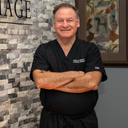Posted underSMAS Facelift q&a
Is it true that a SMAS facelift has an easier recovery and less chance of nerve damage than a deep plane facelift?
57 yo female
Answers (10)
From board-certified doctors and trusted medical professionals

Dr. Jacob Tower, MD
Board Certified Facial Plastic Surgeon, Board Certified in Otolaryngology – Head and Neck Surgery
Answer

Dr. Jeffrey H. Spiegel, MD
Board Certified Facial Plastic Surgeon, Board Certified in Otolaryngology – Head and Neck Surgery
Answer
More SMAS Facelift Questions
See all SMAS Facelift Q&AWE SEND PRETTY
EMAILS
What’s trending? Who’s turning heads? Which TikTok myths need busting? We’ve got you. No fluff, no gatekeeping—just real talk. Get our free, unfiltered newsletter.



